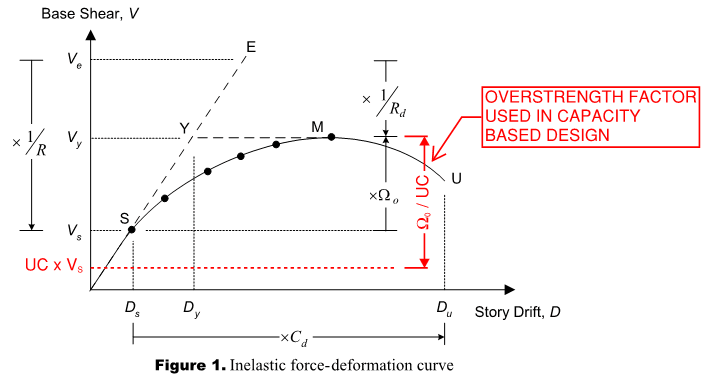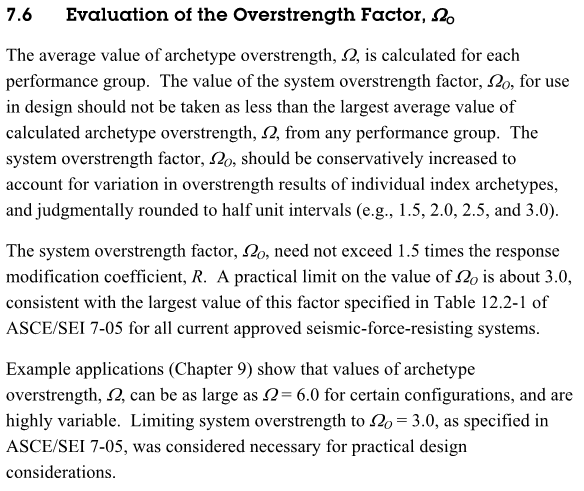Hi All,
I am reading ASCE 7-16 and AISC 341-16.
I am dealing with OCBF and OMF, so I have R=3.25-3.50, say R=3. Anyway this post could be extended to concrete SFRS as well.
In those codes there's no requirement for designing the foundations for seismic forces stronger than those that the superstructure can bring down to its supports.
Namely, if I apply R=3 to the seismic forces on the superstructure, I can go with R=3 for the foundations as well.
But if I overdesign the dissipating members of the superstructure, and I have, say, unity checks UC~0.2-0.3<1.0, I could not have enough dissipation and therefore bring down to the foundations values of the seismic loads greater than the design loads (assessed with R=3).
Note that in practice it is not always possible to calibrate the unity checks to high values for a number of reasons (constraint in the geometry, non-seismic combinations acting and maybe also governing, etc.).
Only in the ASCE 7-16 commentary I find the generic good rule of overdesigning "a bit" the foundations, as they are the least element where one wants to have issues.
Is anybody aware of a minimum unity check / utilization ratio for the dissipating members, to be achieved in a minimum number of members, in order to justify the R per ASCE 7-16 tables?
I know that the effective R could be estimated running a pushover, but I would not go there today with the discussion with my colleagues.
Thanks.
I am reading ASCE 7-16 and AISC 341-16.
I am dealing with OCBF and OMF, so I have R=3.25-3.50, say R=3. Anyway this post could be extended to concrete SFRS as well.
In those codes there's no requirement for designing the foundations for seismic forces stronger than those that the superstructure can bring down to its supports.
Namely, if I apply R=3 to the seismic forces on the superstructure, I can go with R=3 for the foundations as well.
But if I overdesign the dissipating members of the superstructure, and I have, say, unity checks UC~0.2-0.3<1.0, I could not have enough dissipation and therefore bring down to the foundations values of the seismic loads greater than the design loads (assessed with R=3).
Note that in practice it is not always possible to calibrate the unity checks to high values for a number of reasons (constraint in the geometry, non-seismic combinations acting and maybe also governing, etc.).
Only in the ASCE 7-16 commentary I find the generic good rule of overdesigning "a bit" the foundations, as they are the least element where one wants to have issues.
Is anybody aware of a minimum unity check / utilization ratio for the dissipating members, to be achieved in a minimum number of members, in order to justify the R per ASCE 7-16 tables?
I know that the effective R could be estimated running a pushover, but I would not go there today with the discussion with my colleagues.
Thanks.


